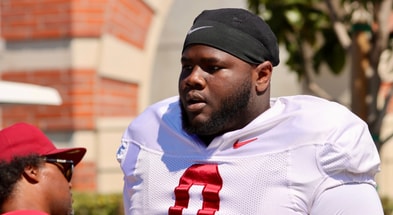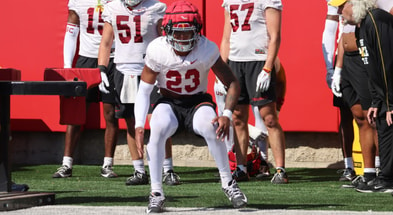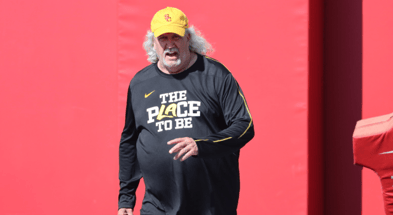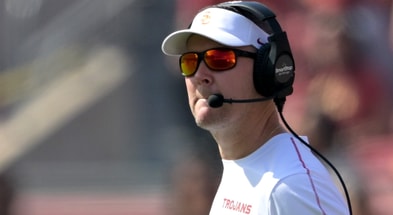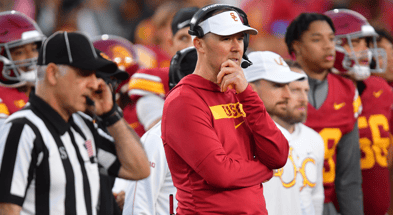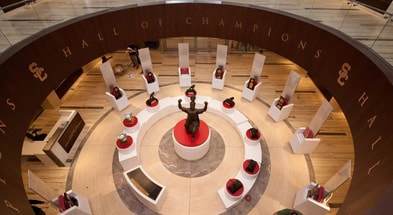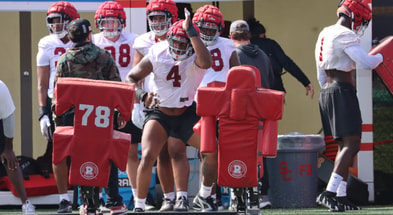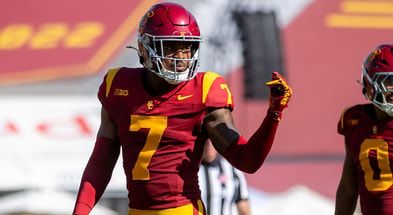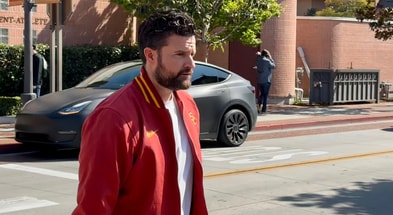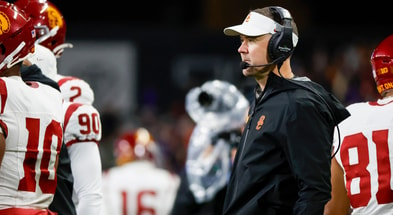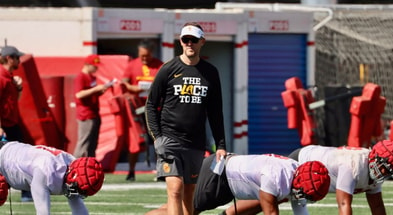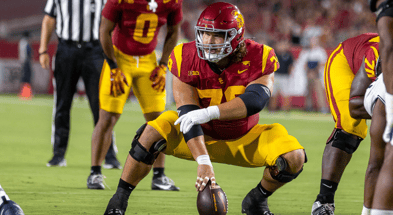Musings from Arledge: Why Tradition Matters in College Football...Or, My Oregon Hate Explained
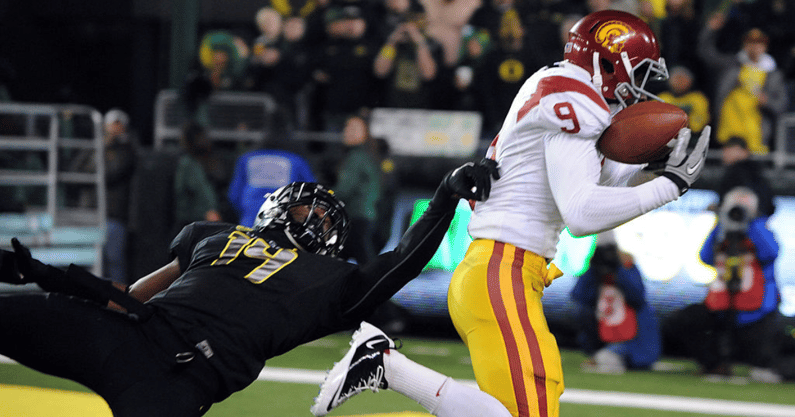
I take shots at the Oregon Ducks from time to time in my written Musings and our video shows. Maybe more frequently than that. And it’s undeniably popular; I’m clearly not the only one who enjoys a good skewering of the Ducks. But I assure you, my feelings are genuine. I’m not just playing to the crowd. I’ve just never fully explained why. I will today.
I should start by conceding that it is true: a lot of hate lives in my heart. I hate the Bruins, and the Irish, and the Sooners, and the Tide – really the SEC as a whole – and TV timeouts, and Pac-12 officiating, and the motto “Faith, Family, Football,” and the phrase “friendly folks at the NCAA,” and halftime shows. (Sorry, I do.) So part of the problem is undoubtedly me.
Still, there’s a reason Dante reserved a special place in hell for the Oregon Ducks. (I think he did; I wasn’t a literature major.) You see, the Ducks are aggressively trying to pull college football in the wrong direction.
This is a time of great turmoil in college football. Almost everything we used to know is no longer true or may not be true soon. College players can now be paid even by teams outside the SEC. USC and Ohio State will play regularly, just not in the Rose Bowl – and, it turns out, people no longer care that much about the Granddaddy of Them All (hat tip: Keith Jackson) anyway. And everybody in the country, even the best teams, will give up 30 or 40 points multiple times in a season. Defense is very much out of style, and hitting somebody – really hitting them – will result in at least a flag and often an ejection.
Some of these changes can’t be helped. Head injuries can no longer be ignored. Some are overdue. It’s well past time for athletes to benefit from the billions generated in college football, even if the pay-for-play schemes used by some programs are grotesque. Some are sad bows to the reality of the times. You can keep the Pac-12 conference together, but if you do, USC can’t compete for national titles with major powers that bring in twice the revenue. And despite these changes, in the long run, college football appears poised to remain one of the country’s favorite sports.
But we lose something important when we break from tradition. Because more than almost any other sport (baseball being one the possible exception), tradition is critical to college football. It is a big part of what makes college football great – what makes college football better than the NFL. And a big part of the reason I so despise the Oregon Ducks.
But that can wait for a minute.
I appreciate the greatness of the NFL game. These are the best players in the world, playing for the highest stakes. But I’ve always preferred the college game. College football has always been more diverse. Every NFL team does basically the same thing in the same way. It’s a copy-cat league, and everybody looks like everybody else. They all run basically the same offensive and defensive schemes (although Baltimore and, now, Chicago are testing that a bit). The stadiums and game experiences tend to be generic and similar. The players and coaches bounce around from team to team, and even the franchises not infrequently bounce around from city to city. There is almost no connection between an NFL franchise and its location.
If you took a middling NFL franchise – say the Indianapolis Colts – and just switched them with another – say the San Diego Chargers – would there really be a difference? There would be no culture shock, because neither franchise is particularly tied to their local area in terms of personnel, personality, style of play, or gameday experience. And if you pulled the starting linebacker from one of the teams and stuck him on the other, he would be running a very similar defense in a very similar way.
NFL franchises are cookie-cutter. The local fans might have very different cultures, but NFL franchises are not homegrown in the soil of any particular locale. They just happen to be where they are, and they are run in the front office and on the field by people who have little or no connection to the local fan bases.
College football has always been different. College programs are deeply tied into the local community and culture. And, in most cases, so are the players. Not only do the players attend the institution (theoretically) and therefore intermingle with and get educated like the other students, but in most cases, the players are even from the surrounding communities. Few colleges recruit nationally. And for the most part, even powerhouse programs that can, still tend to get the bulk of their players from local high schools. (Indeed, this is usually why the powerhouse programs are powerhouses in the first place; because there are a lot of football players near LA, Austin, or Miami.) This has significant ramifications I’ll discuss below.
But it even affects play on the field as the diversity in style of play often has local roots. I don’t think it’s an accident that the Big 10 was historically known for three-yards-and-a-cloud-of-dust football. Those are blue-collar areas, populated by big, strong men, in areas where people historically would grind out a living with their hands, overcoming the cold for big chunks of the year. Tough places. Woody Hayes football made sense in Ohio, just like Bo Schembechler’s football made sense in Michigan.
It’s also no accident that the air-it-our style took root first on the west coast, where the weather was warm, where the culture was more open to innovation and – especially in Southern California – where showiness and flash were coveted instead of being looked down upon.
Colleges are rooted in their communities. It makes sense that the Spirit of Troy wears sunglasses. How could they not? Wisconsin’s marching band could do it too – maybe they do – but it wouldn’t be part of the local culture in the same way. It would be fine but it wouldn’t fit. The University of Miami’s brashness made sense. That’s consistent with the city. So did Tom Osborne’s no-frills, tough-guy football in Nebraska. So do the ridiculous pig noses and Sooey calls in Arkansas, a state that generates $100,000,000 of pork every year. The brisket at tailgates in Austin makes sense; so does the Cajun fare in Baton Rouge. So many of the differences – so much of the weirdness in college football – is due to these regional differences. And it’s great.
Because college programs are so tied into the local communities and cultures, just about every institution has a real rival, a game that matters to them, even if it never really matters to anybody else. Like Oregon-Oregon State. The NFL has no such thing. There are some rivals for historical reasons like Green Bay and Chicago or Dallas and Washington. But I’m not sure those rivalries sizzle the same way Auburn-Alabama does.
And for most professional franchises, rivalries just don’t matter as much. Do the Atlanta Falcons have a rival? If so, I’ve never heard of it. New Orleans, maybe? Whatever. The guys playing for the Falcons might have played for the Saints last year. And they will next year if it means a raise. And I certainly don’t hear any talk about rivalry week or rivalry pranks. I doubt Falcons’ players get especially geeked for that New Orleans game, no matter the records or circumstances, the way USC and UCLA players care deeply about that matchup, no matter what the records or circumstances are in LA.
Often it is local cultural factors that make college football rivalries so strong. Kansas and Missouri have a rivalry that dates back to Bleeding Kansas of the antebellum period. The bad blood didn’t start ten years ago when one of these schools launched an expansion franchise. It goes back to the Bushwhackers and the Jayhawkers. I’m not saying the fans in those places are still fighting the Civil War. But I am saying that generations of fans from those communities have a history of being at odds. There’s lingering bitterness generations later. At least now the rivalry is less likely to end in bloodshed.
Top 10
- 1Breaking
Pop Isaacs
Creighton guard commits to Houston
- 2
Final AP Poll
Basketball Top 25 released
- 3Hot
Way-Too-Early Top 25
Looking ahead to 2025-26 hoops
- 4
Nick Saban
Nominated for Emmy
- 5Trending
Hailey Van Lith
Stuns as SI Swimsuit cover model
Get the On3 Top 10 to your inbox every morning
By clicking "Subscribe to Newsletter", I agree to On3's Privacy Notice, Terms, and use of my personal information described therein.
And many of these college rivalries have a class component to them. There are different kids getting into Michigan and Michigan State, I suspect. The people that go to Texas and Texas A&M are very different, or at least everybody associated with each of those universities seems to think so. And those cultural and socio-economic differences undoubtedly throw kindling on the rivalry.
These cultural differences or, sometimes, shared cultural values give rise to rivalry traditions that are important to the two schools and their fans and are almost impossible for outsiders to understand. Purdue and Indiana play for The Old Oaken Bucket. Why? Because in 1925, two prominent alums of those esteemed institutions concluded that “an old oaken bucket [is] the most typical Hoosier form of trophy” – really!? – and, therefore, they should get a bucket from “some well in Indiana” and play for that trophy every year. Did that make sense to people in Indiana one hundred years ago? Maybe. Maybe oaken buckets really were common Indiana prizes. Or maybe those two guys forget that they were supposed to come up with something and, at the last minute, probably while inebriated, latched onto something in the room where they were drinking. “Ron, we forgot! We were supposed to come up with a trophy!” “Ah, let’s just use that bucket over there.” Regardless it caught on. And how great is it that these teams and their fans care about possessing an old bucket for a year?
This bucket is why I hate Oregon football so much. Well, not so much this particular bucket, but what it signifies. My hatred isn’t driven primarily by the delusional nature of Ducks’ fans. Yes, they’re delusional. But most fan bases are. USC had plenty of fans that thought USC would turn the corner before the start of each season under Clueless Clay. That’s delusion. That’s not my problem with the Ducks.
And it’s not because they used to be bad and now they’re good. When Stanford was (briefly) good recently, I didn’t feel nearly the hatred for the Cardinal that I feel for the Ducks. And it’s not because Oregon’s program is arrogant. Lots of programs are arrogant, ours included.
The problem is that Oregon is the poster boy for what is wrong with college football today. Increasingly, college football is becoming a mass commodity that is sold on a national level just like all other commodities in this country. College football is becoming more like the professional sports leagues with billions of dollars, national television deals, and sophisticated marketing plans. USC is going along with much of that. Just about everybody is.
But Oregon isn’t going along. Oregon was probably the first program to jump into the breach. It turned its back on culture and tradition – I guess that’s easier for Oregon since they didn’t have much of either – even though those are the things that make college football great, the things that separate college football from being nothing more than a AAA league that feeds athletes to the NFL.
Oregon’s program has undergone a makeover paid by Nike money. Nike is a multinational corporation with professional marketers that try to appeal to desired demographics nationwide. They focus group and strategize. They try to come up with just the right look that kids will find appealing. That’s what Uncle Phil has turned Oregon into. And he’s done it well. What Oregon has become is a program that has a brand, one built on intentionally turning its back on tradition. They wear a new uniform every week, most of which don’t even feature their school colors.
When you think of Oregon football’s brand, what do you think of? A silly parade of modern uniform designs. Fancy new buildings. Throwing huge sums of cash at anything that will move. Oregon isn’t a college football program; it’s the marketing arm of a multinational. They market themselves the way a shoe company or a pop star would. They’ve hired the best marketing people in the world and told them to find a way to catch the eyes of impressionable young people who know and care nothing about tradition and who know little about the world. And it works! They’ve built a brand. It just happens to be a brand has nothing to do with Oregon’s university or tradition or location or even the Pacific Northwest. You could transplant Oregon’s football program into any city in the country and carry out that identical strategy and it would work just as well. Try doing that with Arkansas’ pig noses or Alabama’s stupid Houndstooth hats. Wouldn’t work. But Oregon’s would, because it has nothing to do with their school or their community. It has nothing to do with Eugene or Oregon more broadly. It’s sterile, manufactured “look at me!” It’s Mad Men unleashed on college football 60 years later. And I hate it.
I don’t like the Irish. But the Irish still care about tradition. It’s their oxygen. And all the great programs do: Oklahoma, Alabama, Ohio State, Michigan. Tradition is what makes college football great. Even the mediocre programs, like Stanford, don’t become something completely different to gain market share. Stanford stayed true to itself during its brief run near the top. They were Stanford – irreverent, arrogant, and always willing to show you that they don’t really care anyway – but they were still Stanford. They didn’t change who they were because a marketing team from a New York ad agency told them to. They didn’t start wearing unrecognizable uniform colors and base their recruiting strategy on the prevalence of video game consoles.
Now maybe it’s easier for Stanford to remain Stanford, since it inherently has a lot more to sell than Oregon does. Still, what Oregon has done is gross.
So, yes, I hate Oregon football. I will continue to hate Oregon football – at least until they bring Dan Fouts back for games, consistently wear green, and start acting like a college team instead of the wholly owned subsidiary of a multinational corporation whose sole focus is putting what is new and shiny in front of young people. In a time when we are losing so many of our great college-football traditions, Oregon is leading the way the wrong direction.
So go Beavers!


